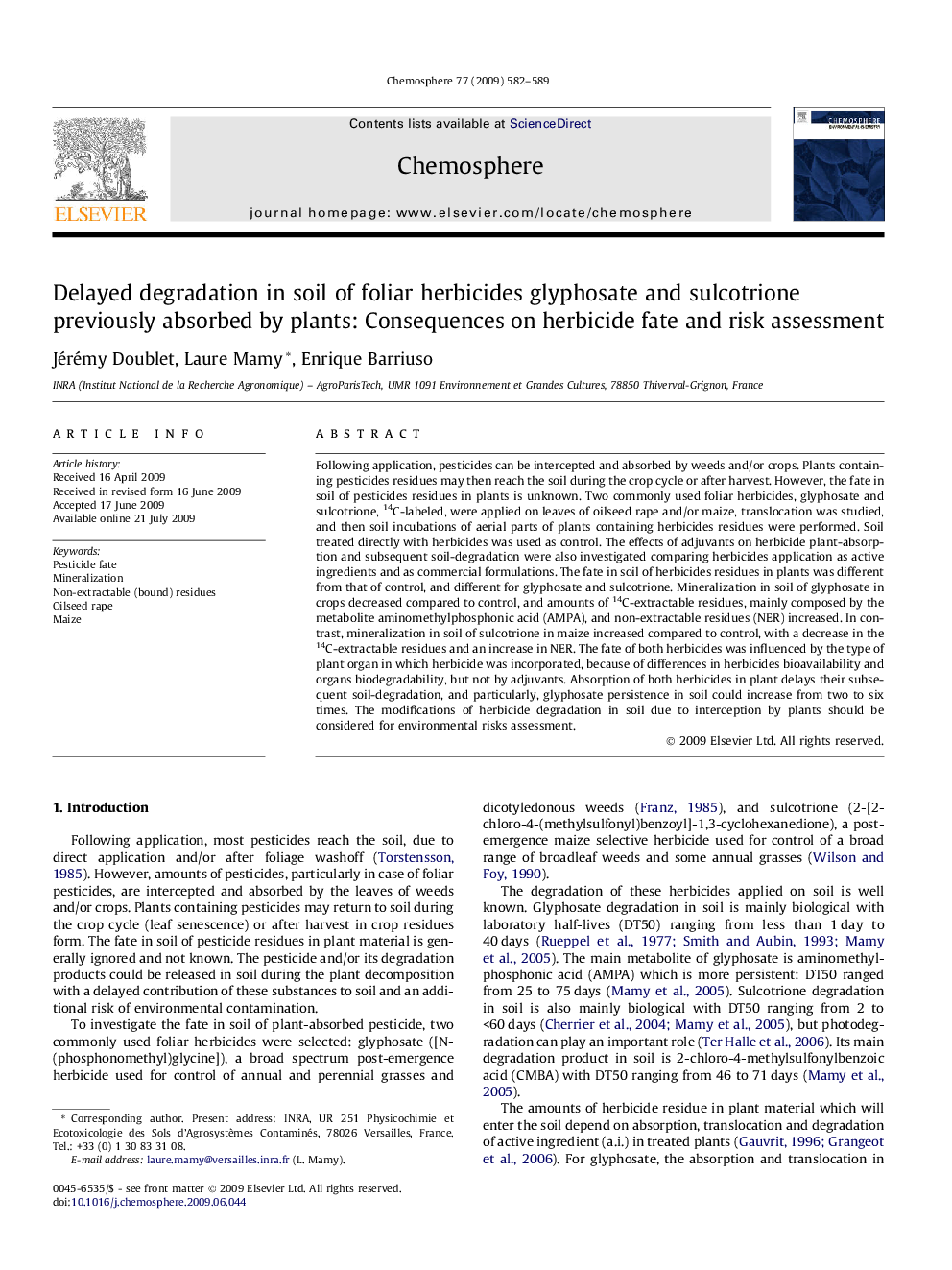| Article ID | Journal | Published Year | Pages | File Type |
|---|---|---|---|---|
| 4412739 | Chemosphere | 2009 | 8 Pages |
Following application, pesticides can be intercepted and absorbed by weeds and/or crops. Plants containing pesticides residues may then reach the soil during the crop cycle or after harvest. However, the fate in soil of pesticides residues in plants is unknown. Two commonly used foliar herbicides, glyphosate and sulcotrione, 14C-labeled, were applied on leaves of oilseed rape and/or maize, translocation was studied, and then soil incubations of aerial parts of plants containing herbicides residues were performed. Soil treated directly with herbicides was used as control. The effects of adjuvants on herbicide plant-absorption and subsequent soil-degradation were also investigated comparing herbicides application as active ingredients and as commercial formulations. The fate in soil of herbicides residues in plants was different from that of control, and different for glyphosate and sulcotrione. Mineralization in soil of glyphosate in crops decreased compared to control, and amounts of 14C-extractable residues, mainly composed by the metabolite aminomethylphosphonic acid (AMPA), and non-extractable residues (NER) increased. In contrast, mineralization in soil of sulcotrione in maize increased compared to control, with a decrease in the 14C-extractable residues and an increase in NER. The fate of both herbicides was influenced by the type of plant organ in which herbicide was incorporated, because of differences in herbicides bioavailability and organs biodegradability, but not by adjuvants. Absorption of both herbicides in plant delays their subsequent soil-degradation, and particularly, glyphosate persistence in soil could increase from two to six times. The modifications of herbicide degradation in soil due to interception by plants should be considered for environmental risks assessment.
